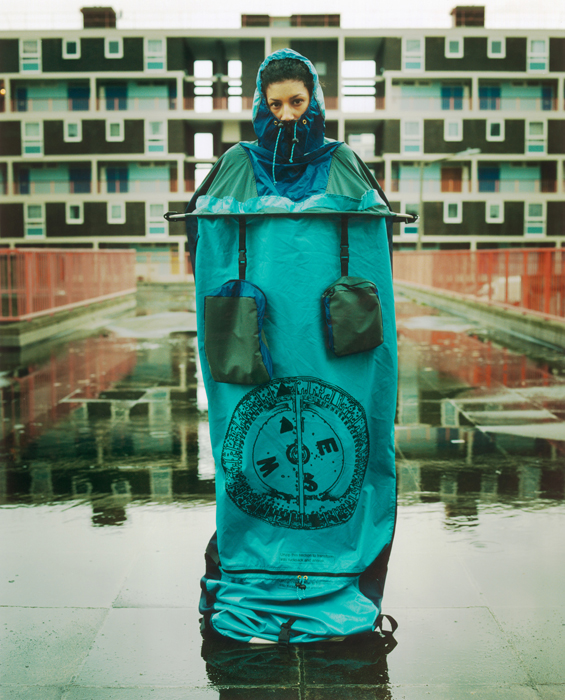
Yves Klein was an important figure in post-war European Art. He has been labled as both neo-Dada and postmodernist, as his work often experiments through the methods and mediums in which they are produced
Allan Kaprow

In the 1950s and 60s, Allan Kaprow was known for starting the “environment” and “happenings”. The Environment art was the beginning of what is now know as instillation art. Kaprow stated, “I just simply filled the whole gallery up … When you opened the door you found yourself in the midst of an entire Environment.” The Happenings are more the performance arts. The Happenings were planned performances that were an interaction between the performers and the audience. Even if the happenings concepts were the same the performance and the interaction with the audience would always be slightly different. A happening could never be duplicated exactly.
Krzysztof Wodiczko

Krzysztof Wodiczko was born in Warsaw in 1943 and currently lives in Boston. With a degree in industrial design, he is most well known for his large-scale outdoor projections. These works, which have been featured in more than a dozen countries, usually focus on social or political issues. One technique he has used to bring people’s personal experiences and the crimes they have suffered into the public sphere is to project these speakers’ hands or faces onto buildings. He has labeled this style of art in which private issues are made public Interrogative Design.
Michael Rakowitz

February 1998 in Cambridge Massachusetts, Rakowitz built the first parasite. The definition of a parasite is, “an organism that lives in or on another organism (its host) and benefits by deriving nutrients at the host's expense.” Rakowitz parasite does exactly that, it uses the ventilation of an existing building to inflate and provide temporary heated shelter for homeless people.
Felix Gonzalez-Torres


Felix Gonzalez-Torres is a Cuban born artist whose minimalist sculptures and installations often are seen as a reflection of his experience with AIDS and issues of death, identity, public vs. private, and the role of participation. Many of his projects encourage the viewer to take a piece of the work with them—candies for example. When asked who his public was, he answered Ross, his deceased lover, stating that “the rest of the people just come to the work.”
One of his works, Untitled (1991), a billboard of an unoccupied bed displayed in 24 locations throughout New York City, was made after his loss of Ross to AIDS.
Lucy Orta

Lucy Orta is a British artist who went to school for fashion design but is known as a visual artist that creates “architecture with soul.” Her earlier projects were Refuge Wear and Body Architecture. They consisted of tents turned into over coats and backpacks that became sleeping bags. Her work is a critical response to issues in society and the suggestions for alternative life styles.
http://www.studio-orta.com/artwork_list.php?fk=&fs=1&fm=0&fd=0&of=0
Olafur Eliasson

Olafur Eliasson is a Danish-Icelandic artist whose projects often reflect the space they are made to temporarily occupy. Two examples of his work are the Weather Project installed in Turbine Hall of Tate Modern, London and the New York City Waterfalls.
Ilya Kabakov

Ilya Kabakov is a Russian artist. From 1983 to 2000, he has made 155 installations that were shown around the world. Some of his of his more famous instillations are “The Man Who Flew Into Space From His Apartment”, “The Untalented Artist”, “The Man Who Never Threw Anything Away”.
No comments:
Post a Comment